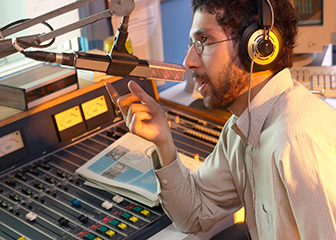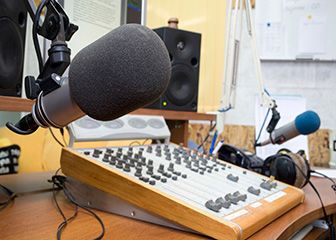Summary
Please enable javascript to play this video.
| Quick Facts: Announcers and DJs | |
|---|---|
| $20.94 per hour | |
| See How to Become One | |
| None | |
| See How to Become One | |
| 51,800 | |
| -4% (Decline) | |
| -2,200 | |
What Announcers and DJs Do
Announcers present news and sports or may interview guests on media such as radio and television. Disc jockeys (DJs) act as masters of ceremonies (emcees) or play recorded music at weddings, parties, or clubs.
Work Environment
Many announcers and DJs work in radio and television studios or are self-employed. Some work part time, and schedules might include early mornings, nights, weekends, and holidays.
How to Become an Announcer or DJ
Entry requirements for announcers and DJs vary. Broadcast announcers and radio DJs typically need a bachelor’s degree in journalism, broadcasting, or communications; experience gained from internships or working at a school radio or television station is helpful. Other types of DJs typically need a high school diploma and some on-the-job training.
Pay
The median hourly wage for broadcast announcers and radio disc jockeys was $21.58 in May 2023.
The median hourly wage for disc jockeys, except radio was $20.00 in May 2023.
Job Outlook
Overall employment of announcers and DJs is projected to decline 4 percent from 2022 to 2032.
Despite declining employment, about 4,400 openings for announcers and DJs are projected each year, on average, over the decade. All of those openings are expected to result from the need to replace workers who transfer to other occupations or exit the labor force, such as to retire.
State & Area Data
Explore resources for employment and wages by state and area for announcers and DJs.
Similar Occupations
Compare the job duties, education, job growth, and pay of announcers and DJs with similar occupations.
More Information, Including Links to O*NET
Learn more about announcers and DJs by visiting additional resources, including O*NET, a source on key characteristics of workers and occupations.
 United States Department of Labor
United States Department of Labor








